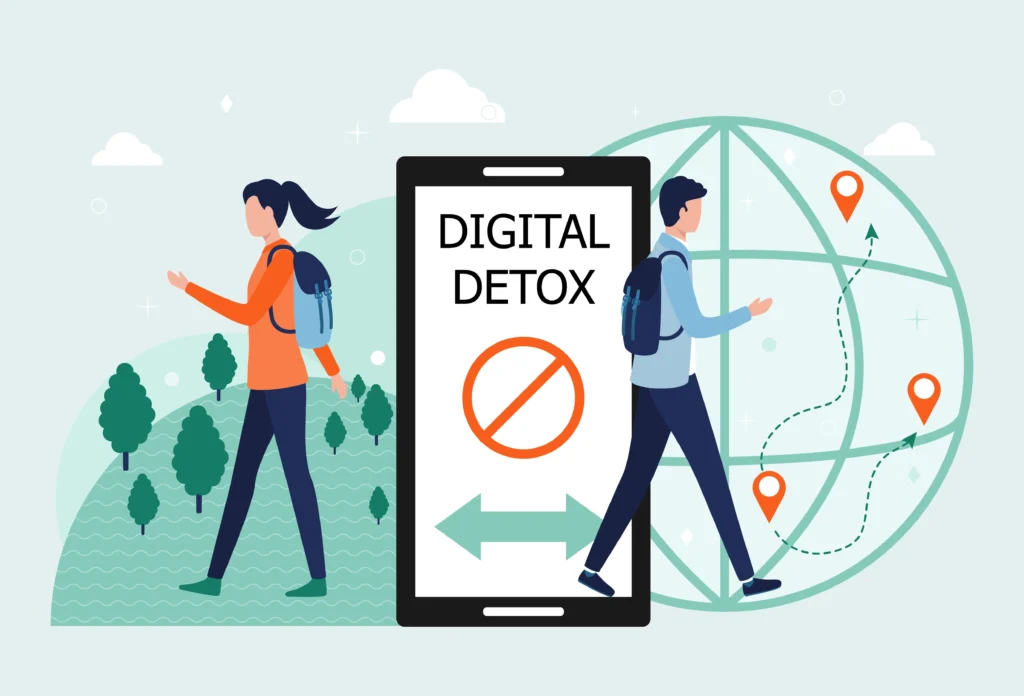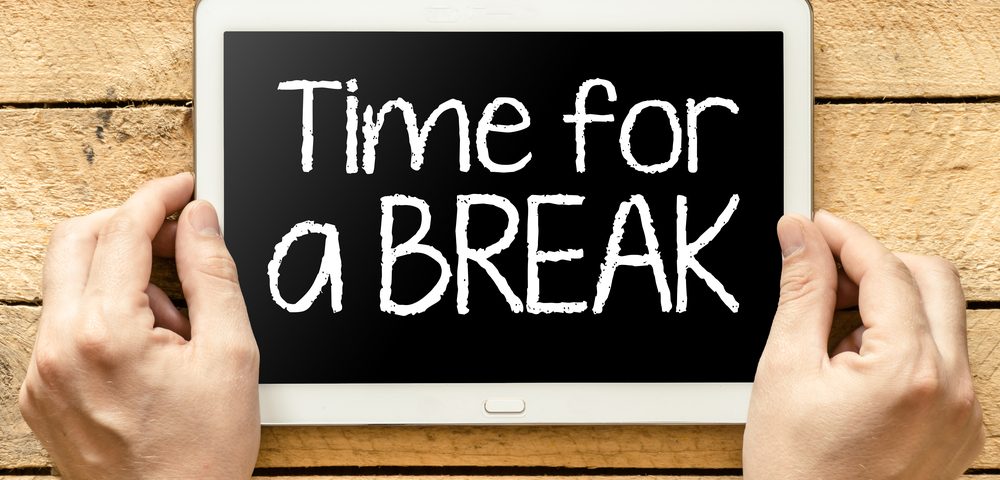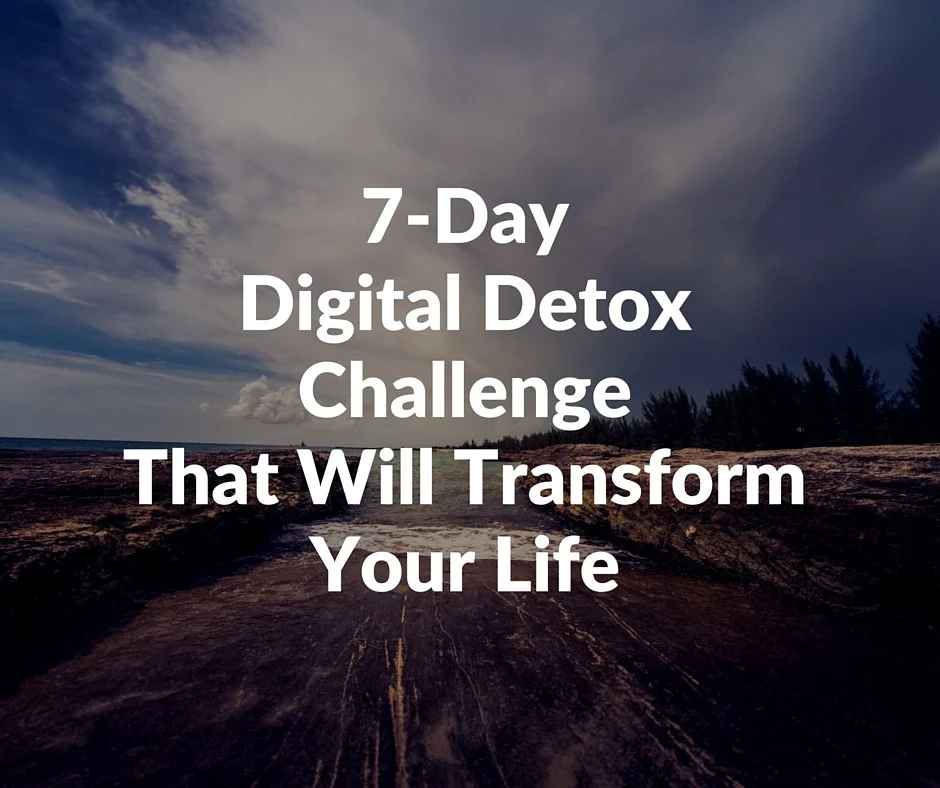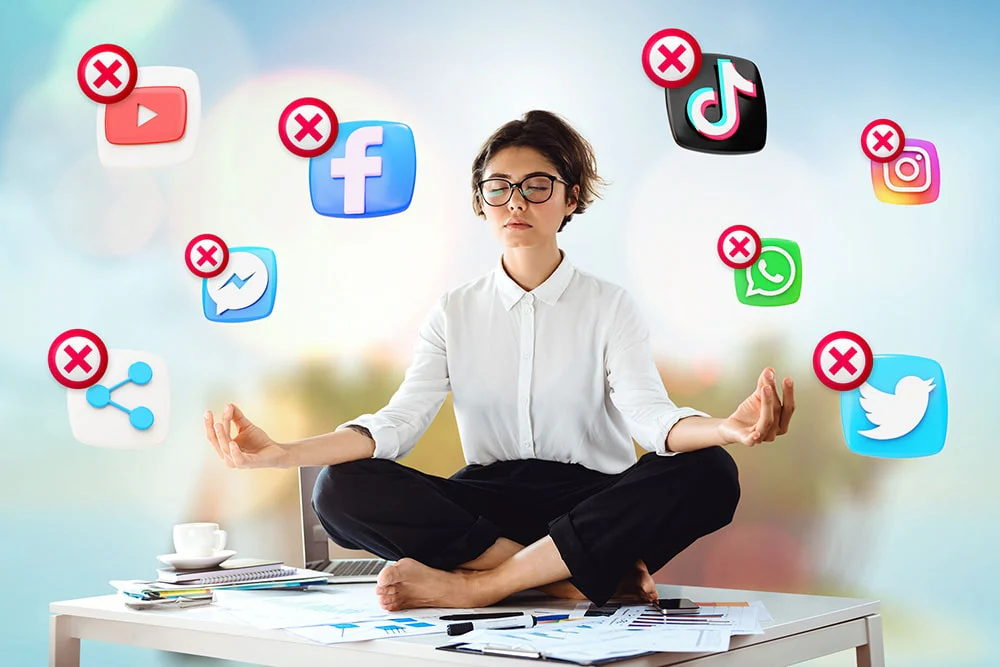Table of Contents
Toggle7‑Day Digital Detox Plan: Reset Your Mind & Thrive in 2025
Introduction: The Importance of a Digital Detox in 2025
We are living in a paradox in 2025. We are more connected than ever, but we are also more anxious, distracted, and mentally tired. People are constantly on the go due to smartphones, social media, constant emails, and binge-worthy platforms, making it challenging to find mental peace. We have shorter attention spans, sleep problems, and are more likely to get burned out from using technology too much.
So, what’s the solution? The solution is to take a break from technology. It’s not about shunning technology, but about clearing your thoughts, establishing new boundaries, and reconnecting with what truly matters.
This comprehensive 7-day plan is designed to be practical, sustainable, and deeply transformative. This detox will help you get back your time, focus, and inner peace, whether you’re a student, a remote worker, a creative person, or a parent.

The Real Benefits of Taking a Break from Technology

Mental
- Better memory and sharper focus
- Less stress, worry, and fear of missing out
- Better control of emotions and being aware of them
In terms of physical
- Better sleep quality and length
- Less fatigue and eye strain from screens.
- More exercise as you unplug
Social
- Better relationships with friends and family
- Conversations that matter more
- Getting back in touch with your physical surroundings
Creative & Productive
- More creative
- Higher productivity
- More room for hobbies and self-improvement
Your 7-Day Digital Detox Plan
Day 1: Audit and Awareness
Goal: Watch and write down what you do online.
Steps:
- Use the Screen Time or Digital Wellbeing features to find out how much time you spend on your screen on average.
- Track your most used apps and the time spent on each.
- Write down how each app makes you feel: energized, worn out, anxious, or inspired?
Tip for your mind: This isn’t about judging. It’s about getting people to pay attention. You are looking at your habits like a scientist looks at data.
Use a printable “Digital Use Tracker” to keep track of your thoughts.

Day 2: Declutter Your Digital Life
Goal: Cut down on digital noise and make room for clarity.
Things to do:
- Consider removing apps that are not essential or that you find difficult to stop using.
- Get off of email lists that you don’t need.
- Clean up your digital desktop, organize your files, and get rid of duplicates.
- Turn off or mute WhatsApp groups.
Bonus Challenge: Create folders for the apps you do keep, and move them off your home screen.
Emotional Insight: Let go with thanks. You should realize that the mess had a purpose, but it’s time to move on.
Day 3: Mindful Morning Routine
The goal is to start your day off right, not in a mess.
What to do:
- Avoid screens for the first hour of your day.
- Try stretching, going for a walk, writing in a journal, meditating, or reading a real book.
- Make your bed, drink some water, and enjoy your tea or coffee in peace.
Why It Works: The brain is most awake in the morning. Avoiding screens preserves this state for focus and creativity.
How does it feel to start the day without noise or comparisons?
Day 4: Set up areas where you can't use technology.
Goal: Keep your home safe from digital distractions.
Things to do:
- Avoid using screens in your bedroom, dining room, or bathroom.
- Put your phones away at night.
- Instead of your phone, use a real alarm clock.
- To make your tech-free areas more inviting, add books, candles, or plants.
Tip for conversation: Ask your family or roommates to join in and make meals phone-free.
Day 5: No social media
Goal: Stop scrolling through social media for a whole day.
What to do:
- Sign out of all of your social media accounts.
- You can delete apps for a short time or use app blockers.
- Plan activities you can do without the internet ahead of time, like cooking, hiking, visiting a friend, or making something.
- Think about how you feel when you aren’t bombarded with news, trends, and opinions.
Science Fact: Social media sites turn on the brain’s dopamine loop. Taking a short break cuts down on checking compulsively
Day 6: Get back in touch with reality
Goal: Rebuild connections and experiences in the real world.
What to do:
- Talk to or meet someone without texting them first.
- Be outside for at least an hour.
- Go to a museum, a library, or a market in your area.
- Write a letter or a note of thanks by hand.
Emotional Benefit: Being around other people releases oxytocin, which helps people trust and connect with each other.
Tip for creativity: Use your mind to take pictures, not your phone. Look at the color, smell, sound, and temperature.
Day 7: Reflect and Rebuild
Goal: Make lessons part of the rules for long-term digital wellness.
Actions:
- Reflect in your journal: What changed this week? What felt the best?
- Make your own digital wellness contract that includes limits on screen time, tech-free hours, and monthly app audits.
- Curate your feed: unfollow negativity, and follow inspiring people.
Ideas for habits:
- Don’t use your phone for an hour before bed.
- Put your phone in another room when you’re working on something that requires your full attention.
- Every day, allocate time for offline activities such as walking or engaging in a hobby.
Summary Infographic Table
| Day | Focus | Action | Benefit |
|---|---|---|---|
| 1 | Audit | Track usage & feelings | Self-awareness |
| 2 | Declutter | Delete/unfollow | Mental space |
| 3 | Morning | Screen-free rituals | Calm focus |
| 4 | Zones | Tech-free spaces | Better sleep & presence |
| 5 | Sabbath | No social media | Emotional reset |
| 6 | Reconnect | Offline bonding | Happiness boost |
| 7 | Reflect | Wellness rules | Sustainable balance |
Extra Section: Tips for Success

- Please inform someone that you are undertaking this. Being responsible helps.
- Use airplane mode during times when you need to focus.
- Instead of just sitting around and doing nothing, do something creative like writing, painting, gardening, or singing.
- Celebrate little victories! It’s progress if you spend 30 minutes less time in front of a screen.
Final Thoughts: Get Your Time Back and Get Your Mind Back
In 2025, the most expensive thing we can buy is our time. The more you put it to beneficial use, the better your life gets.
This detox isn’t about being against technology; it’s about making a space where your mind, relationships, and creativity can grow. When you change your habits, you get back the power to choose being present over being distracted, being at peace over being stressed, and having real connections over scrolling through empty pages.
Let this week be your fresh start. In just seven days, your digital life will be quieter, clearer, and kinder.
Are you ready to start?
What are you most looking forward to (or worried about) about this detox?
Stay aware. Stay human.
FAQs : Related Digital Detox
What is a digital detox, and why is it important?
A digital detox is a time when you purposely disconnect from digital devices to feel better and less mentally tired. It’s important in 2025 because more people are getting addicted to screens and mental health problems are on the rise.
Would it be possible to do a digital detox while working in tech?
Yes! Try to spend less time on screens when you’re not working. During work hours, block social media and take breaks away from the computer.
How long should a break from technology last?
One day is helpful, but seven days is best for changing a habit. You can do it again every month to keep it up.
What if I live alone or feel isolated without tech?
At first, that’s normal. Plan for an analog connection: write letters, make phone calls, visit local places, or keep a journal.
Will such activities help me sleep or calm my nerves?
Yes! Less time spent on screens and less comparing yourself to others can help you sleep better and feel less anxious.
What is a digital detox, and how do I get started?
A digital detox is a conscious break from digital devices—like smartphones, computers, and social media—to restore mental clarity and reduce tech-related stress.
First, keep track of how much time you spend on screens, set clear limits (like tech-free zones or hours), and do things offline that are good for you, like walking, journaling, or reading. Start with just one hour a day and work your way up to a seven-day plan for more benefits.
How can a week-long break from digital devices help my mental health?
A structured 7-day digital detox is good for your mental health because it lowers anxiety, improves focus, boosts mood, and lessens the bad effects of too much digital stimulation. It also helps break compulsive habits like doomscrolling and comparison, offering space for self-reflection and calm.
How do I know I need a digital detox?
If you feel any of the following, you may need a digital detox:
- Constant fatigue or eye strain
- Having trouble concentrating
- Bad sleep
- Stress from social media
- Less productive
- Feeling like you have too much on your mind or too much to do
These signs show that you need to take back your time and energy from using technology too much.
How can you reduce screen time without feeling isolated?
Stay connected intentionally. Set up times to talk to people in person or on the phone, only use technology during certain times, and plan activities that make you feel positive, like hobbies, nature walks, or family dinners. A detox doesn’t cut you off from others; it helps you reconnect with them.
Can a digital detox help you feel less anxious and stressed?
Indeed, it can significantly reduce your feelings of anxiety and stress. Continuous digital consumption floods the brain with information and triggers stress hormones. Taking a break from screens lets your nervous system reset, helps you sleep better, lowers anxiety about comparing yourself to others, and makes it easier to control your emotions.
What are the best things to do offline while you are on a digital detox?
The best things to do offline are
- Write in a journal or do creative writing.
- Reading a book in print
- Yoga or working out
- Make something new to eat.
- Gardening
- Art, crafts, or do-it-yourself projects
- Being with loved ones or in nature
Pick things to do that make you feel alive and fulfilled.
What steps do I need to take to make my morning routine tech-free?
Don’t check your phone first thing in the morning. Stretch, meditate, read, make your bed, or eat breakfast without a screen. Try to stay away from technology for the first 30 to 60 minutes of the day to set a calm mood. Instead of screens, use clocks and journals.
Does a digital detox help you sleep better and focus better?
Absolutely. Screens that give off blue light stop the body from making melatonin, which makes it harder to sleep. Notifications all the time and doing more than one thing at once make it harder to pay attention. A digital detox helps your body get back to its natural sleep cycles and teaches your brain to focus on one thing at a time.
How can I take a break from technology while still working online?
Try to cut down on screen time that isn’t necessary.
- Use focus apps to block social media.
- Set times to check your email.
- Every hour, take breaks away from your computer (like stretching, walking, or drinking water).
- Sign out after work hours.
Your work can stay digital while you become more aware of your life.
What are the long-term benefits of taking breaks from technology?
Regular digital detoxes lead to:
- Better memory and focus
- Less stress and burnout
- Better sleep quality
- More meaningful relationships
- More creative and productive work
They help you manage your time and attention, which are two of the most important things you have in a world full of distractions.